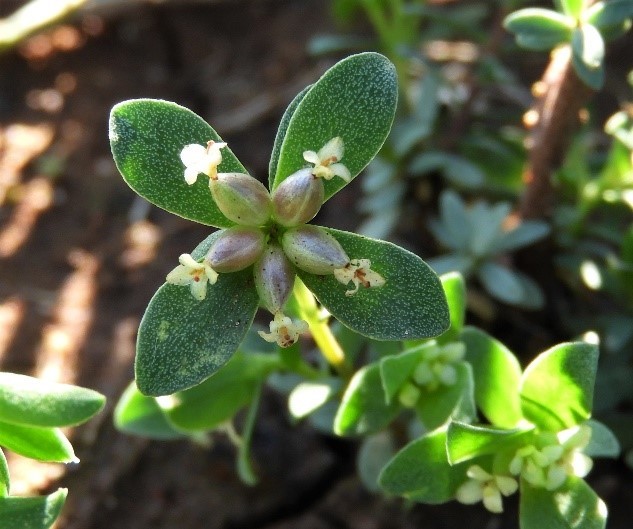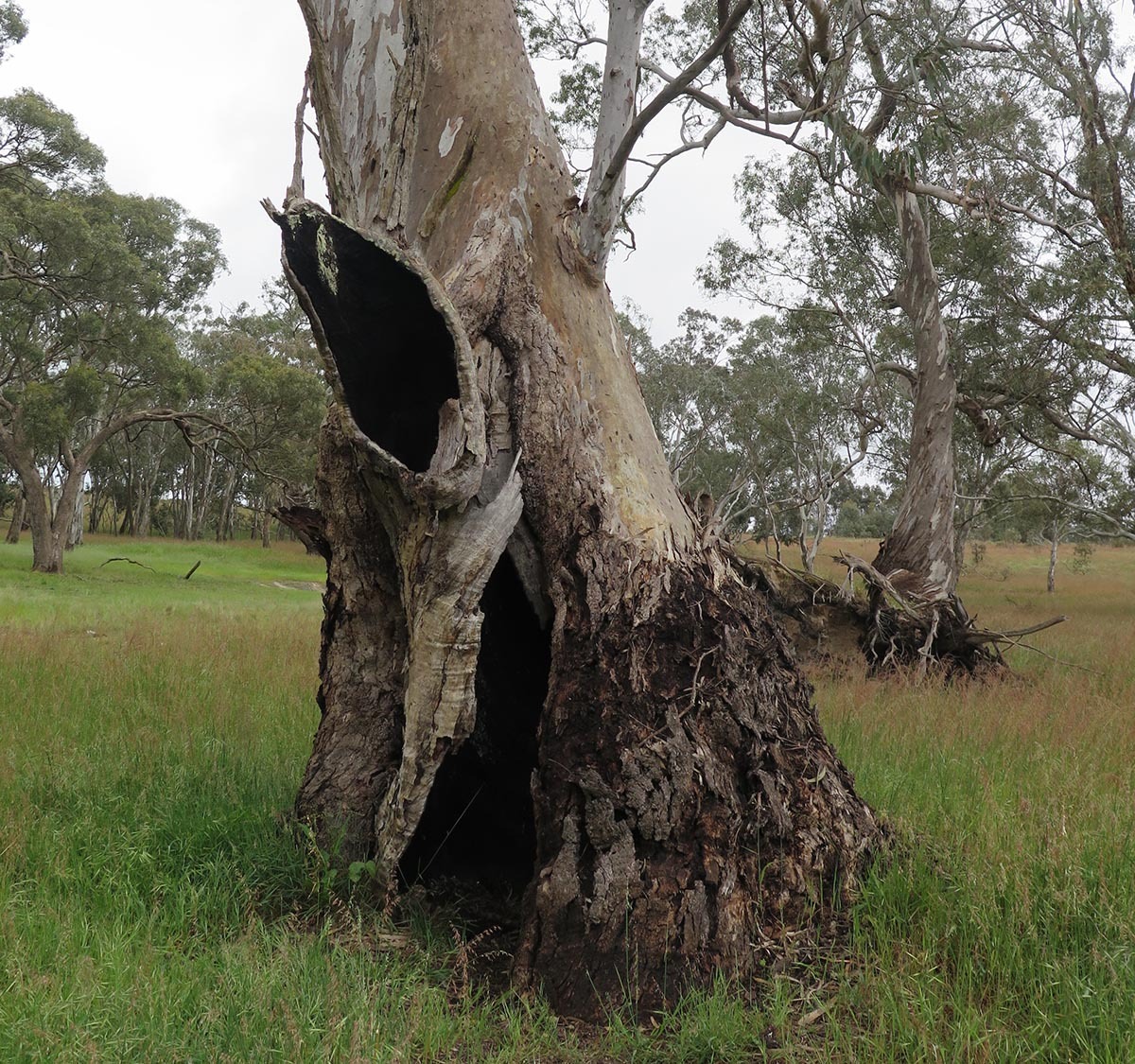Pimelea conservation trust
Our Pimelea Conservation Trust Fund supports landowners and property managers who have Spiny Rice-flower (Pimelea spinescens) present on their land and wish to conserve this highly threatened plant species. Funding is available annually by application for activities that are directly related to the objectives of the Pimelea spinescens Recovery Plan.
The Fund was established in 2005 as part of a Conservation Agreement with Multiplex Developments in relation to the protection and conservation of Spiny Rice-flower (Pimelea spinescens subsp. spinescens), under the Environment Protection and Biodiversity Conservation Act 1999. A Trust Committee has been established, with representatives from Federal, State and Local governments to administer the funds in accordance with the Conservation Agreement, with Trust for Nature acting as trustee for the fund. The Conservation Agreement outlines an annual program of funds to be allocated by the Trust Committee for Pimelea Recovery Activities. Generally, the total amount available each year is $12,000. However, this amount may vary should the Trust Committee assign more funds to an annual allocation or allocate future funding to multi-year projects.

Apply for funding
Grant applications open 7th June
Applications for funds to support activities to conserve Pimelea are open from 7th June and close 27th August.
All applicants will be reviewed and recommended by the Pimelea spinescens Recovery Team.
Successful applicants will be selected from the Recovery Team’s recommendations PCTF Committee in November.
A project’s time frame will be dependent on the project, and all applicants will be informed of the outcome in December via email. Successful applicant(s) will receive a formal letter in the post.
Impact of the Fund since 2005
Each year, the Fund supports the management of two reserves which contain Spiny Rice-flower: Altona Nature Conservation Reserve and Pimelea Nature Conservation Reserve.
Since 2005 the Fund has supported both regional and Melbourne metropolitan environmental groups, the Country Fire Authority, consultants, Melbourne’s Royal Botanical Gardens, and private landowners in:
- An examination of the species genetic diversity and population structure by the Royal Botanical Gardens, helping to set conservation activities for the species and ensure Spiny Rice-flower’s long-term survival;
- Development of a new Spiny Rice-flower Recovery Plan;
- The employment of a Pimelea Conservation Officer to support both the Pimelea Conservation Trust Fund and Pimelea spinescens Recovery team;
- An assessment of all the Spiny Rice-flower translocations that have been carried out to date, providing analysis of ways to improve future translocation activities (see Resources below);
- The development of a Spiny Rice-flower monitoring protocol endorsed by the Pimelea spinescens Recovery Team;
- Research, asking if supplementary planting will improve the recruitment capacity of populations;
- Four local community education days about the species, its environment and optimal management;
- Optimal management in the form of an ecological burn and monitoring at nine different Pimelea spinescens sites;
- Stock/rabbit proof fencing installed at four sites;
- Weed control at five sites over a period of five years;
- Vermin eradication at two sites;
- The production of the Pimelea and Her Grassland Friends children’s book (see Resources below).
- Seed collection has occurred from eight sites that are not currently represented in the Pimelea spinescens seed bank.
- Supplementation has occurred at four Brimbank Council sites that have small and isolated P. spinescens populations.
- A direct seeding project has just been implemented to learn what is the best method to germinate P. spinescens from seed in the field.
- A research project that is tracking the gender presentation of individuals during a flowering season and then accessing the female’s and hermaphrodite’s seed quality.
Pimelea spinescens Recovery Team
In 2007, a Pimelea spinescens working group was formalised as the Pimelea spinescens Recovery Team. The Pimelea spinescens Recovery Team is a group working towards better conservation and management strategies for Pimelea spinescens subsp. spinescens and Pimelea spinescens subsp. pubiflora.
The Recovery Team coordinates the implementation of the Recovery Plan via:
- Openly sharing information regarding our experiences with this species;
- Regularly reviewing and updating protocols/guidelines for the species conservation;
- Review funding applications and recommend to the PCTF Committee;
- Review past and present conservation management methods, to be critiqued and recommendations made;
- Encourage research and regularly provide technical advice around processes that would impact Pimelea spinescens;
- Review and advise all publications, translocation plans and reports regarding Pimelea spinescens, which will inform future practice.
The current Recovery Team comprises of representatives from Trust for Nature, state government (Royal Botanic Gardens Victoria, Department of Environment, Land, Water and Planning, Parks Victoria and VicRoads), 22 local governments, six Catchment Management Authorities, Country Fire Authority, environmental consultants, Landcare groups, and universities.
Meetings
Meetings occur three times a year, at various locations in Western Melbourne or regional centres. The formal meeting is held in the morning and after lunch attendees visit several local Pimelea spinescens sites. Meetings are open for any Pimelea spinescens manager or community member to attend and/or raise an issue concerning this species. The meetings usually occur in March, July and November. If you’re interested in attending the next meeting, contact Trust for Nature’s Pimelea Conservation Officer.
Guidelines and protocols
The Recovery team have several endorsed documents available which have been developed to guide the management of this species to achieve best practice, available in the Guidelines and Resources below. These documents are constantly evolving to incorporate the most up to date research and on ground observations.
